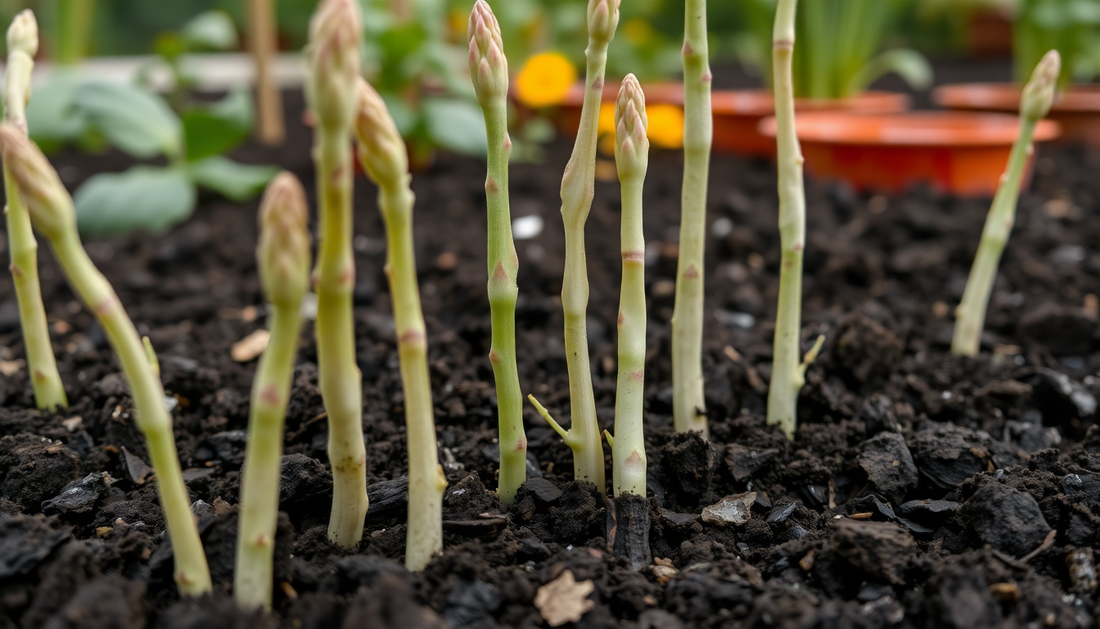
Why Are My Asparagus Spears Thin and Weak?
If you're an asparagus grower, you may have encountered the frustrating issue of thin and weak asparagus spears. This can be a common problem, but the good news is that there are several steps you can take to address it and improve the health and productivity of your asparagus plants.
In this blog post, we'll explore the common causes of thin and weak asparagus spears, and provide you with practical tips and strategies to help you get your asparagus crop back on track.
Understanding Asparagus Growth
Asparagus is a perennial vegetable that can provide a bountiful harvest for many years if properly cared for. The spears we enjoy eating are actually the young, tender shoots that emerge from the plant's underground crown.
Healthy asparagus plants should produce thick, succulent spears that are a vibrant green or purple color. However, when the spears are thin and weak, it can be a sign that something is amiss in the growing environment or cultural practices.
Causes of Thin and Weak Asparagus Spears
There are several potential reasons why your asparagus spears may be thin and weak. Let's explore the most common culprits:
1. Inadequate Soil Fertility
Asparagus is a heavy feeder and requires nutrient-rich soil to thrive. If your soil is lacking in essential nutrients, such as nitrogen, phosphorus, or potassium, it can result in stunted, thin spears.
2. Improper Soil pH
Asparagus prefers a slightly acidic soil, with a pH range of 6.0 to 6.8. If the soil pH is too high or too low, it can impede the plant's ability to uptake nutrients, leading to poor growth and thin spears.
3. Insufficient Sunlight
Asparagus plants require at least 6 hours of direct sunlight per day to produce their best yields. If your plants are shaded by trees, buildings, or other structures, it can result in weak, spindly spears.
4. Overcrowding
Asparagus plants need adequate spacing to thrive. If the plants are too crowded, they will compete for resources, leading to thin and weak spears.
5. Pest or Disease Pressure
Certain pests, such as asparagus beetles, or diseases, like asparagus rust, can weaken the plants and contribute to thin, weak spear production.
6. Improper Harvesting Techniques
If you're not careful when harvesting your asparagus spears, you can inadvertently damage the plant's crown, which can impact future growth and spear quality.
Strategies for Thicker, Stronger Asparagus Spears
Now that we've identified the potential causes of thin and weak asparagus spears, let's explore some strategies to help you address the problem and improve your crop:
1. Amend the Soil
Conduct a soil test to determine the nutrient levels and pH of your asparagus bed. Based on the results, add the appropriate amendments, such as compost, aged manure, or a balanced fertilizer, to ensure your plants have access to the nutrients they need.
2. Optimize Soil pH
If your soil pH is outside the ideal range, you can adjust it by adding lime (to raise the pH) or sulfur (to lower the pH). Follow the recommendations based on your soil test results.
3. Provide Adequate Sunlight
Ensure that your asparagus plants are receiving at least 6 hours of direct sunlight per day. If necessary, prune or remove any obstructions that may be shading the plants.
4. Thin Out Overcrowded Beds
If your asparagus plants are too crowded, thin them out to the recommended spacing, which is typically 12 to 18 inches between plants. This will allow each plant to access the resources it needs to thrive.
5. Manage Pests and Diseases
Regularly inspect your asparagus plants for signs of pests or diseases, and take appropriate action to control them. This may involve using organic or chemical controls, or implementing cultural practices like crop rotation.
6. Harvest Carefully
When harvesting your asparagus spears, be gentle and avoid damaging the plant's crown. Cut the spears at ground level, leaving at least an inch of stem attached to the crown.
7. Patience and Persistence
Improving the health and productivity of your asparagus plants may take some time and effort, but with the right strategies, you can enjoy thick, succulent spears for years to come.
Remember, asparagus is a long-term investment, and it can take several years for a new planting to reach full production. Stick with it, and you'll be rewarded with a bountiful, delicious harvest.
In conclusion, thin and weak asparagus spears can be a frustrating problem, but by understanding the underlying causes and implementing the right strategies, you can get your asparagus crop back on track. With a little TLC and attention to detail, you'll be enjoying thick, flavorful spears in no time.
Happy gardening!







No comments